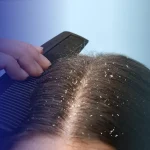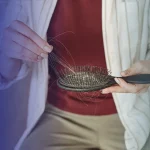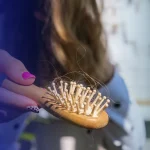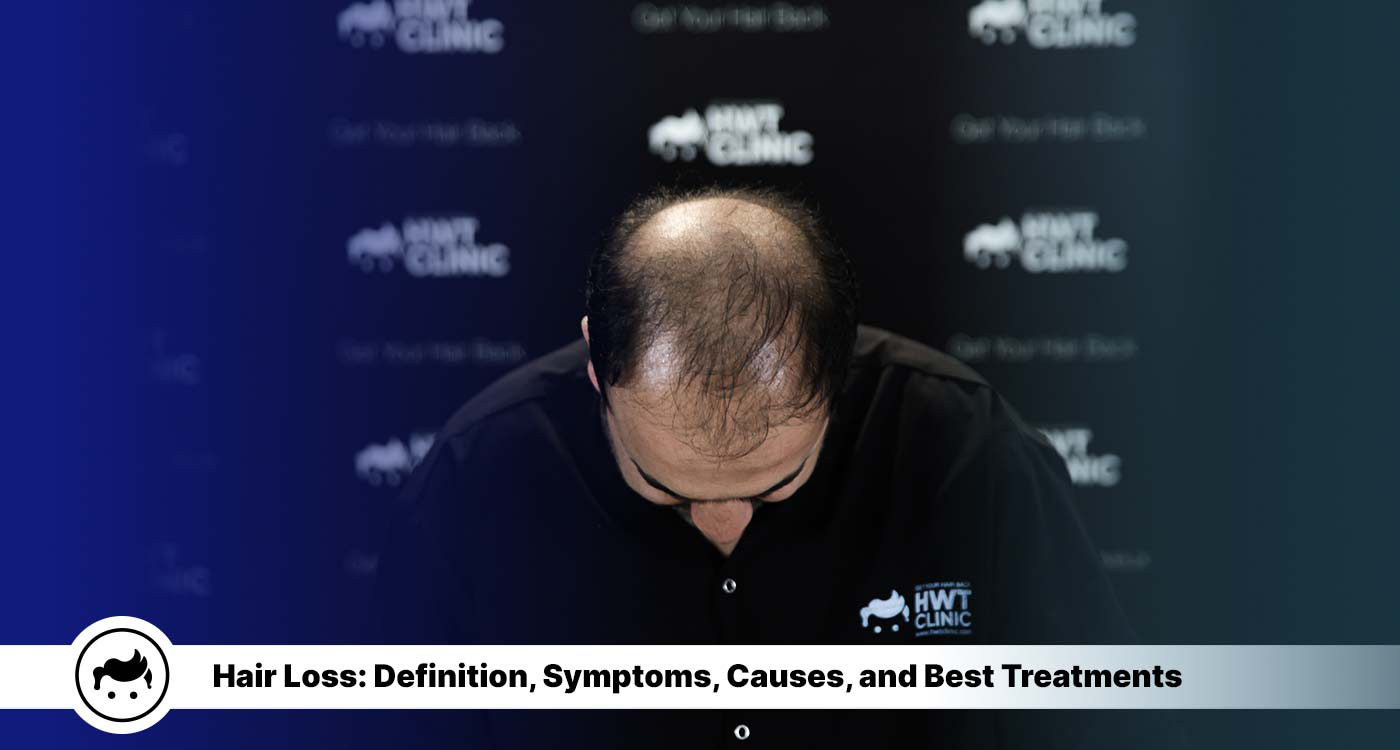
Hair loss is a condition that affects many people of all ages. It causes anxiety and distress, making it difficult to feel confident in a person’s skin. Hair loss occurs when hair follicles shrink over time, resulting in fewer and thinner strands. Genetics, medical conditions, hormones, stress, or certain medications cause it. Common symptoms include a receding hairline, balding patches, thinning of the scalp, or an overall decrease in volume or amount of hair. Hair loss sometimes leads to itching and redness around the affected area. Treatment for hair loss depends on the underlying cause. There are several products available to help stimulate new growth and prevent further shedding if it’s due to genetics. It includes prescription treatments like minoxidil and finasteride, as well as topical solutions containing vitamins and minerals. Other causes, such as hormonal imbalances or medical conditions, require more specialized treatment from a doctor or dermatologist. Depending on the issue, one needs to take medications, use light therapy, or have a surgical procedure. Although hair loss is common and often not serious, it still emotionally impacts people suffering from it. Taking steps to address the underlying cause and seeking proper treatments makes all the difference.
Table Of Content
Hair loss has many signs and symptoms, which vary depending on the cause. One of the most common is gradual thinning at the top of the head, where hair becomes much finer and less dense over time. Another sign is patches or circles of baldness that form in a specific area of the scalp, often with broken hairs around them. Hair suddenly becomes much looser and sometimes falls out more easily than usual. Complete body hair loss occurs, though it is rarer. 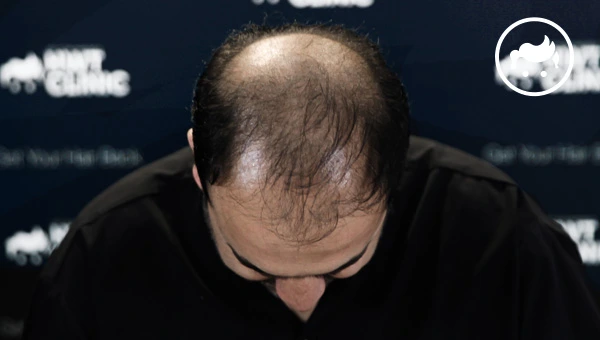
Hair loss has many signs and symptoms, which vary depending on the cause. Listed below are the common ones:
Gradual head top thinning is one of the telltale signs of hair loss, often among the first signs of hair thinning. It manifests as a decrease in the density of the scalp’s hair follicles, giving the appearance of light locks or bald patches on top of the head. The dire condition presents through finer strands that are less resilient to styling and manipulation, making them easier to pull out with simple brushing.
Patches or circles of baldness are common signs of hair loss and are one of the first indications of thinning hair. They generally appear as smooth, circular patches of baldness with edges and areas that sometimes feel itchy, and the skin surrounding them is slightly red and scaly. The patches are not taken lightly; they often signal an underlying issue that requires treatment to reduce further hair loss.
Hair suddenly becoming looser is one of the earliest signs of hair loss, a condition that is commonly characterized by shedding and thinning strands. It is often accompanied by other telltale symptoms such as increased hair in the shower drain, receding hairlines, patches of baldness on the scalp, or wider than the usual spacing between hairs. Visually speaking, it looks like the locks are gradually being stripped away from the scalp, leading to thinner braids that do not have the same body or bounce they once had. Thus, noticing an overall increase in looseness in mane is among the first signs of thinning.
Complete body hair loss is one of the most extreme signs of hair loss and is quite disturbing. The first signs of hair thinning, which appear as a general overall thinning or patchy bald spots, are often one of the earliest indicators of complete hair loss across the entire body. It looks like widespread patches of smooth skin where normal hair, including eyebrows, eyelashes, beard, and chest hair, and pubic hair in more severe cases. It leads to increasingly noticeable alopecia that overwhelms an individual with its impact on their appearance as complete body hair loss progresses.
Scaling is one of the signs of hair loss and the first sign of thinning. It looks like small patches of white flakes or scales that start to appear on different parts of the scalp, resembling dandruff but more persistent. The scales are accompanied by redness and itching around the affected areas, which cause further damage if not treated properly.
Hair loss is a common issue that is caused by many factors. Some of them are:
Hair loss, medically known as alopecia, is caused by various factors. However, family heredity is one of the most common causes. A person is at a greater risk of hair loss if their family has experienced hair loss. Genetics plays an important role in determining susceptibility to certain types of hair loss, such as male and female pattern baldness. The mechanism behind genetic hair loss is complex. Still, it involves a gene variant that leads to increased levels of certain hormones, which, in turn, cause thinning and shedding of hairs on different parts of the scalp over time. The process, known as miniaturization, happens gradually, so it’s often difficult to notice until significant amounts of hair have been lost. Overall, understanding what causes hair loss is an important step in helping to prevent it. Knowing that there is a genetic component to alopecia is key for people looking to protect their hair health. Taking preventive measures early goes a long way in maintaining luscious locks.
Hormonal changes, such as related to menopause, is a major cause of hair loss. The condition, known as alopecia, results when hormones interfere with the natural growth cycle of the hair follicle, leading to thinning or baldness. Other factors contributing to the phenomenon are poor nutrition, certain medications, and medical conditions like thyroid disease or anemia. Some people have a genetic predisposition, causing them to experience more severe forms of what causes hair loss. Fortunately, treatments are available to help manage symptoms of alopecia causes, but it is important to identify the root cause to find a suitable solution.
Hair loss is a common issue that affects many individuals and is caused by various medical conditions. Alopecia areata is an autoimmune condition in which the body’s immune system attacks hair follicles, resulting in patchy baldness on the scalp or other body areas. Androgenic alopecia is a genetic condition caused by a sensitivity to male hormones called androgens; it often produces diffuse thinning over the entire scalp. Telogen effluvium is a temporary hair loss triggered by stress, medication, or physical shock, causing hair to enter the shedding phase. Trichotillomania is an impulse control disorder characterized by pulling out one’s hair due to psychological. Understanding what causes hair loss is essential for proper diagnosis and treatment. Alopecia causes vary, but recognizing the underlying condition is key for managing symptoms and improving quality of life.
Hair loss, or alopecia, is caused by various factors, including certain medications and dietary supplements. Medications such as anticoagulants, beta-blockers, nonsteroidal anti-inflammatory drugs, antidepressants, hormones, and isotretinoin are all known to cause hair thinning and balding in some people. Supplements like Vitamin A and Biotin have been linked to hair loss due to their tendency to increase sebum production, which clog pores on the scalp and contribute to an environment important to recognize that what causes hair loss for one person does not necessarily lead to alopecia in another; however, if an individual suspect that their medication or supplement is causing their hair loss, it is recommended that they consult with a doctor to discuss alternative treatment options.
Radiation therapy to the head is a common cause of hair loss due to its direct impact on the skin and scalp. The radiation destroys rapidly-dividing cells, including the ones responsible for growing and replacing hair follicles. The process leads to alopecia, or baldness, as the existing hair falls out and new growth fails to appear. It leads to thinning of the hair around the affected region as radiation destroys the healthy cells in the area. The entire head experience full-body hair loss in other cases. What causes of particular type of alopecia are changes that occur in the blood vessels supplying oxygen to the follicles, ultimately leading to their death.
A stressful event is a major cause of hair loss or alopecia. What causes hair loss is the body’s response to an emotional shock, leading to increased production of androgens, which are hormones that promote hair loss. It leads to shedding more hairs than usual and, if left untreated, bald patches on the scalp. The intensity of stress varies from person to person, with some able to manage it better than others.
Hair styles and treatments, such as tight braids or weaves, contribute to what causes hair loss. It is known as traction alopecia, a type of Alopecia Areata, which happens when the follicles become damaged from tension applied over a long period. Additionally, chemical treatments, like dyes and bleaches, cause damage to the scalp, leading to hair thinning and even complete balding in extreme cases. Thankfully, with proper care, the types of alopecia are usually reversible once the damaging treatment has stopped.
Hair loss has several effects on an individual, both emotionally and physically. Physically, hair loss causes the affected area to become itchy or sensitive to the touch. It leads to scarring of the scalp and baldness; people with severe are prone to developing skin conditions such as eczema or psoriasis. Hair loss is emotionally devastating for many individuals who feel it affects their appearance and self-confidence. People suffering from hair loss often report insecurity, embarrassment, anxiety, depression, and isolation. It leads to reduced social interactions, difficulty maintaining relationships, and job performance issues. Hair loss even impacts how someone perceives themselves and how others perceive them. Hair loss is sometimes a symptom of an underlying medical condition, such as a hormonal imbalance, an autoimmune disorder, or a nutritional deficiency. Therefore, it’s important to consult a doctor to determine the underlying cause of hair loss and the best course of treatment.
There are several different types of hair loss, including:
Hair loss is a difficult and confusing issue, but there are steps to take to make an accurate diagnosis. A doctor or dermatologist is typically in charge of diagnosing hair loss. They examine the scalp during the initial visit, review any existing medical conditions, ask about medication use and family history, and look for signs of underlying skin problems. They perform a blood test to rule out other potential causes of hair loss, such as thyroid issues. They refer a specialist for further testing if needed. The doctor diagnoses the type of hair loss a person is experiencing and develops a treatment plan that best suits their needs.
Hair loss is a symptom of many illnesses, including thyroid disease, alopecia areata, and anemia. Illnesses that cause hair loss in females include hormonal imbalances, autoimmune disorders, iron deficiency, and certain skin conditions like lichen planus. Illnesses that cause hair loss in males include male pattern baldness caused by genetics or hormone imbalances. Other causes for both genders include medications, chemical treatments, extreme stress, surgery, and diet changes.
Risk factors of hair loss include age, genetics, hormones, nutrient deficiencies, certain medications, scalp infections, and stress.
Hair loss is a stressful experience, but there are steps to take to prevent it.
Hair loss is treated in two different ways:
Turkey Hair transplant clinics in Turkey provide a permanent solution to hair loss problems. The affordability of Turkey hair transplant cost has made the country a significant destination for many individuals experiencing hair loss issues. The attractiveness of Turkey in addressing hair loss problems is attributed to the reasonable costs, qualified experts, and high-quality clinics. While there are variations in costs depending on different hair transplant techniques, overall, Turkey hair transplant costs are considered cost-effective compared to other countries.
It is recommended to visit a doctor if an individual notices a significant amount of hair falling out or if the hair loss is accompanied by other symptoms such as itching, redness, or scaliness of the scalp. Additionally, it is important to seek medical advice if the hair loss is sudden or occurs in a pattern, such as a receding hairline or bald patches. It is advisable to see a doctor if the hair loss is impacting the individual’s self-esteem or daily life. It is best to seek advice from a doctor as soon as possible, as early diagnosis and treatment are more effective.
Hair loss is a common problem for men, but it doesn’t have to be permanent. Many treatments are available that help restores lost hair and give back confidence. Some of them include the following:
1. Rogaine (Best minoxidil treatment)
It is important to weigh both the potential benefits and drawbacks of the product when considering the use of Rogaine. It is easy to apply, unscented, and recommended for all hair types, and the FDA approves it. On the other hand, it takes several months before any results are noticed. Pregnant or nursing individuals are prohibited from using the product because it causes side effects such as skin irritation, scaling, contact dermatitis, or even excessive hair growth in other body areas. Additionally, there is a high chance that hair loss returns if using Rogaine after noticing results is stopped. Therefore, it is important to carefully consider the factors before deciding if Rogaine is the right choice.
2. Roman (Best finasteride treatment)
Finasteride is a medication the FDA approved to help with male pattern baldness. Scientists created it to treat prostate cancer, which works by decreasing the hormone dihydrotestosterone (DHT) in the scalp. The hormone shrinks hair follicles, so reducing DHT leads to more hair regrowth and slows hair loss. It is important to note, though, that the drug only works for adults who aren’t pregnant or nursing. It won’t work on other body parts either, as minoxidil does. Finasteride is obtained in both pill form and as a topical solution. Roman is a telehealth company that provides treatments for hair loss, premature ejaculation, and erectile dysfunction. They offer oral finasteride starting at $20 per month, but customers have to complete an online assessment and chat with a healthcare professional. Get unlimited follow-up appointments and free monthly delivery with Roman; pros include convenient doctor visits, fast shipping, and discreet packaging. Unfortunately, it’s unsuitable for pregnancy or nursing and causes side effects. Plus, it takes three months to see any results, and it isn’t available in all states.
3. HairMax (Best laser comb treatment)
HairMax offers laser combs to help people deal with hair loss and thinning. They have two models: the Ultima 9 Classic, nine lasers, and the Ultima 12 Classic, equipped with twelve lasers. HairMax claims that the devices are safe for both men and women, suggesting 8-11 minutes of use three days a week, depending on the model chosen. The combs feature a cordless and lightweight design and no LEDs and medical-grade lasers. Additionally, they come with a 6-month money-back guarantee. Consider the pros and cons when deciding whether or not to buy. It is suitable for males and females, doesn’t involve taking medication, and requires only 11 minutes per treatment session three times a week. It is FDA-cleared. It is expensive and causes side effects, though it isn’t FDA-approved.
4. Platelet-rich plasma (PRP)
A newer way doctors are using to treat baldness is PRP. First, they take a blood sample through a special centrifuge machine. It spins the blood fast, which makes it possible for the doctor to get the platelets out of it. Then, the platelets are injected into parts of the scalp. The hope is that it helps fix damaged hair follicles. The treatment helps stop hair loss, but there’s not enough good evidence to back it up yet, according to some studies from 2019. Unfortunately, the FDA has not officially approved it.
5. Therapies
Individuals who experience hair loss find it difficult to cope. Medical professionals prescribe medications, ointments, creams, and anti-hair loss shampoos to assist with the issue. Alternatively, individuals seek consultation with a specialist with expertise in the area. Some companies specifically cater to men and offer various treatment options. The companies collaborate with individuals to determine the most suitable plan and ensure it is appropriate for their specific case.
Several treatment options are available to address hair loss caused by female pattern baldness and other types of alopecia. Some of the best hair loss treatments for women include:
1. Minoxidil topical solution
Minoxidil, known as Rogaine, is a medication the FDA has approved for hair loss treatment. It is available in liquid and foam form and is purchased over the counter without a prescription. It is important to consider that applying it daily initially causes an increase in hair loss, but over time, new growth appears, although it is thinner than before. One likely needs to continue using the medication for at least six months or longer. It is important to consider that not all individuals experience positive results from using Rogaine, as it only works for certain types of baldness when used correctly.
Additionally, it causes side effects such as scalp irritation, extra hair growth on the face or hands, or rapid heart rate. Individuals experiencing sudden and patchy hair loss, are under 18, have an irritated, painful, or discolored scalp, or have experienced hair loss due to styling methods, chemicals, or products are prohibited from using Rogaine. Individuals with heart disease have to consult a doctor before using the medication. An alternative treatment option that a doctor suggests is oral minoxidil.
2. Prescription spironolactone pills
A healthcare professional recommends using spironolactone (Aldactone) as a treatment for hair loss. It is noted that it takes several months, or even longer, for the drug to start showing its effects. It is sometimes used off-label although the FDA has not approved spironolactone as a treatment for hair loss. Additionally, the drug is used to treat conditions such as liver disease and kidney problems, high blood pressure, heart failure, and an excess of the hormone aldosterone in the body. Possible side effects of spironolactone include allergic reactions, fluid and electrolyte imbalances, high potassium levels, breast growth in men, skin irritation, drowsiness, diarrhea, nausea, leg cramps, headaches, dizziness, and irregular periods or bleeding after menopause. It is important to inform a healthcare professional of all medications and supplements being taken, as spironolactone interacts with them. It is important to speak with a healthcare professional or pharmacist to determine if it is the right option to use the drug.
3. Ketoconazole shampoo
Ketoconazole (Nizoral) is a medication that helps stop hair loss due to androgenic alopecia. It comes in shampoo form, with 1% and 2% strengths available at pharmacies. The stronger formula is more effective, but it causes irritation, dryness, or oiliness of the scalp and hair, changes the texture of a hair, or makes it less curly if an individual has permed hair. Ketoconazole leads to hair loss, so speak to a doctor if it happens. Scientists are still exploring the effects of ketoconazole on hair loss and agree that further research is needed.
4. Laser Therapy
Laser therapy, known as red light therapy, cold laser, soft laser, photobiomodulation, or biostimulation, is an effective way to encourage hair regrowth for people experiencing thinning or balding due to androgenic alopecia. It is performed by a dermatologist or with a portable device from companies such as HairMax. The FDA-cleared devices use low-level laser energy to promote healthy new hair growth by improving circulation in the hair follicles and eliminating waste. Examples include brushes, combs, caps, and bands. A 2015 study suggests that regular laser therapy is able to stop hair loss and even restore lost hair. Note that regulations do not cover laser therapy in the same way as medications; it appears to be relatively safe, and long-term safety has yet to be proven.
5. Corticosteroid injections
Alopecia areata, discoid lupus, and lichen planopilaris are conditions treated with corticosteroid injections. The shots mimic natural hormones in the body to prevent the immune system from attacking the processes causing hair loss. The treatment results in new hair growth within four weeks, but it has to be administered by a healthcare professional. However, it is important to note that corticosteroid injections cause skin thinning or atrophy at the injection sites. Other options for treatment include topical or oral corticosteroids, though they have more side effects.
Hair loss is a difficult and emotionally draining experience. It leaves a person self-conscious about their appearance, making it hard to feel confident in themselves. Fortunately, several supplements are available that help restores hair growth or stop the progression of hair loss.
1. Nutrafol (Best Overall)
Nutrafol is renowned amongst experts as the best supplement to combat hair loss. Its potent, scientifically-backed ingredients have proven effective in restoring hair growth for both men and women. It is designed to address the underlying causes of hair loss, including stress, hormones, aging, and more. Additionally, Nutrafol’s proprietary blend of vitamins and extracts makes it an optimal choice for people looking to nourish their scalp and promote healthy hair growth. The precise combination of ingredients makes Nutrafol the most comprehensive and effective supplement for treating hair loss.
2. Vitafusion Multivitamin Plus Beauty (Rave Reviews)
The gummies not only enhance hair growth and appearance formulated with biotin, vitamins C and E, zinc, folate, and other essential nutrients but positively impact the strength of nails, as per customer feedback.
3. Hair Sweet Hair Growth Vegan Gummies (Best Vegan Gummies)
Hair Sweet Hair Growth Vegan Gummies are a dietary supplement in the form of gummies marketed to promote hair growth. The gummies are vegan and are made with natural ingredients such as biotin, folic acid, and zinc. The ingredients are believed to support healthy hair growth and help to prevent hair loss. The gummies are easy to take, making them a convenient option for people looking to support their hair growth. It is marketed as the “Best Vegan Gummies” for Hair Growth.
4. Biotin (Best Value)
Biotin is a water-soluble vitamin that helps the body convert food into energy. It helps strengthen hair and nails, making it a popular supplement for people who want to improve their appearance. People with a biotin deficiency experience hair loss, so taking biotin as a supplement helps prevent or reverse the issue.
5. Viviscal Extra Strength Dietary Supplements (Best Seller)
Viviscal Extra Strength Dietary Supplements is a product that is marketed as a supplement for hair loss. It contains a blend of ingredients such as marine complex AminoMar, horsetail extract, vitamin C, and biotin, which promote healthy hair growth. The product is taken orally and is available in the form of tablets. It is a best-seller among the Viviscal brand, known for hair loss treatment. It is not an FDA-approved drug, it is a dietary supplement, and its effectiveness varies for different individuals. Consultation with a healthcare professional is recommended before using it.
Yes, hair loss is curable in many cases. Hair loss is caused by various factors such as genetic predisposition, hormonal changes, or certain medical conditions. Various treatments are available to help stop and reverse hair loss, including medication, laser therapy, and lifestyle modifications like switching to a healthy diet and reducing stress.
No, hair loss is not permanent. A healthy scalp typically regenerates lost hair over time, while hair growth and fall vary from person to person. Genetics, age, hormones, and lifestyle are all factors that cause temporary or permanent baldness. However, many products on the market help reverse thinning or balding through topical treatments and dietary changes. It is possible to restore one’s hair to its natural state with proper care.
Hair loss and hair shedding are two different conditions. Hair loss is losing strands from the scalp due to medical or genetic causes, such as alopecia, male pattern baldness, trichotillomania, and other disorders. Hair shedding is a normal part of a body’s natural cycle which involves periodic thinning of the hair over time, usually about 100 hairs per day, followed by new growth. It is considered a normal part of life, but certain factors exacerbate it.


